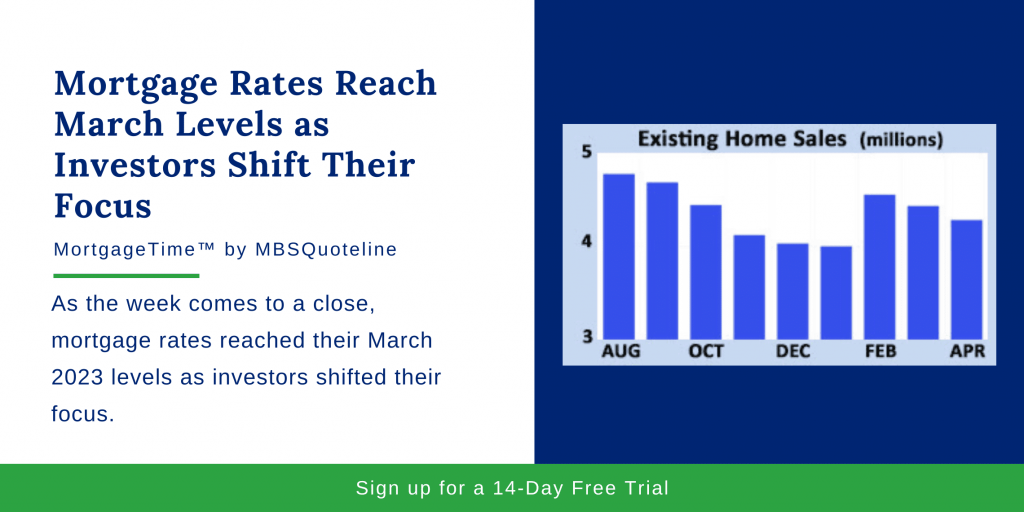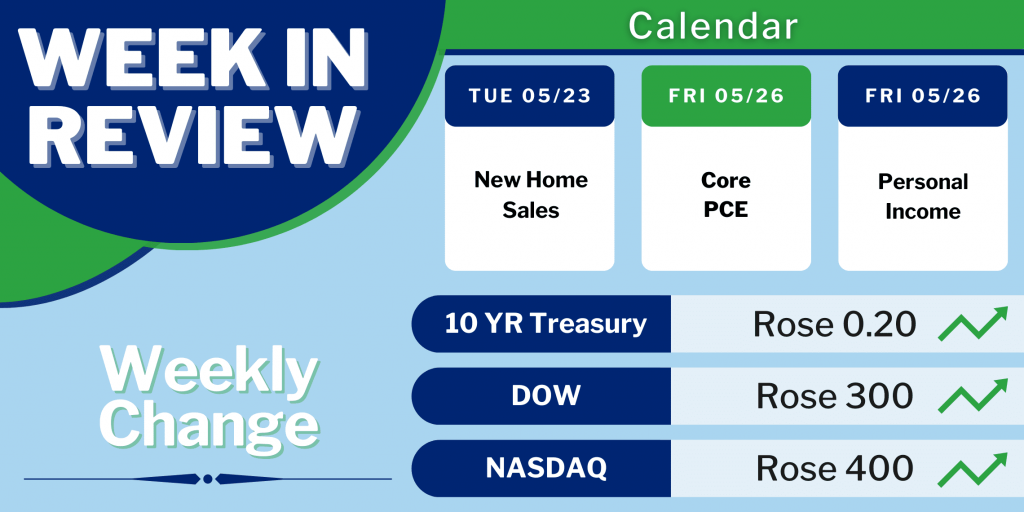As the week comes to a close, mortgage rates reached their March 2023 levels as investors shifted their focus. Previously, investors concentrated on the banking sector. In addition, they heavily reacted to the debt ceiling talks.
Initially, investors shifted to safer assets, such as bonds. However, they did the opposite this week, negatively impacting mortgage rates. Meanwhile, the economic data contained no significant surprises. As a result, rates climbed to the highest levels since early March before the banking industry troubles emerged.
Retail Sales Increase 0.4% as Bars and Restaurants Post Strong Figures
Consumer spending accounts for over two-thirds of U.S. economic activity. Thus, the retail sales data helps to measure the health of the economy. In April, retail sales rose a healthy 0.4% from March. Although this falls below the consensus, positive revisions to the March results left the net figures in line with expectations.
Looking at the details, restaurants and bars posted another strong month. Beyond that, consumers generally spent more on necessities such as groceries and less on large discretionary items such as furniture and appliances, suggesting that inflation is influencing spending habits.
Mortgage Rates Reach March Threshold as Home Sales Fall
In housing news, sales of existing homes in April fell 3% from March and were 23% lower than last year at this time. Inventory levels stand at just a 2.9-month supply nationally, far below the 6-month supply typical in a balanced market.
The median existing-home price of $388,800 again was a little lower than a year ago and down from a record high of $413,800 in June 2022.
Home Builder Sentiment Exceeds Expectations Despite Lack of Inventory
The inventory of existing homes for sale is no over 40% lower than in 2019 prior to the pandemic, creating an enormous opportunity for builders to provide additional supply. In fact, the chief economist of the National Association of Home Builders (NAHB) estimates that the U.S. has a shortage of 1.5 million homes and says that a significantly faster pace of construction is needed to reduce that deficit. The most recent government data revealed that home building continues to pick up, but at a very gradual rate. Single-family housing starts in April rose 2% from March. Similarly, single-family building permits, a leading indicator, increased 3% from the prior month.
Encouragingly, a separate survey of home builder sentiment from the NAHB rose far more than expected to the highest reading since July. Builders clearly are aware of the strong demand for homes and are optimistic, but they listed tighter credit conditions for construction loans and high prices for land, labor, and materials as headwinds for even faster production.
Looking Ahead After Mortgage Rates Reach March Levels
Investors will continue to keep a close eye on the debt ceiling negotiations and banking sector troubles. They will also watch to see if Fed officials elaborate on their plans for future monetary policy.
For economic reports, New Home Sales will come out on Tuesday. Personal Income and the core PCE price index, the inflation indicator favored by the Fed, will be released on Friday.
While refinance applications rose 10% week-over-week, mortgage rates stayed roughly the same. To receive by-the-minute updates on mortgage-backed securities, try our platform free for 14 days.
Stay connected with MBSQuoteline on social media by following us on Facebook, Twitter, and LinkedIn.
All material Copyright © Ress No. 1, LTD (DBA MBSQuoteline) and may not be reproduced without permission. To learn more about the MortgageTime™ newsletter, please contact MBSQuoteline at 800.627.1077 or info@mbsquoteline.com.



